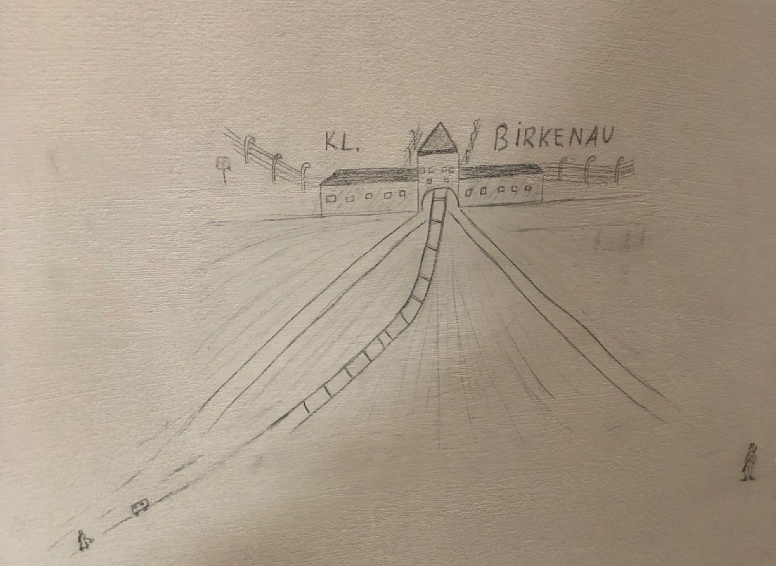Letters to Auschwitz - A Student Review

About a month ago, we were given an opportunity to represent our school on a trip to Poland with the charity: Lessons from Auschwitz. The program consisted of an orientation seminar, a trip to Auschwitz-Birkenau and then a follow up seminar. Here, Year 12's Katie Crowfoot and Chloe Willis tells us about their experience...
The orientation seminar was last weekend and there we met the group we would be travelling with, as well as hearing from a Holocaust survivor. The man who we heard speak was called Rudi Oppenheimer and he was around 8 years old when he and his family were taken to Bergen-Belsen concentration camp. He recounted his journey as he remembered it, which was incredibly powerful because he told the whole event through the eyes of an 8 year old boy who could not understand the enormity of what he was going through. Due to having a sister who had been born in England, Rudi and his family were kept alive in order to have the possibility of being swapped for German captives in England, and as a result, Rudi got a good job in the camp which led to his survival. He was working in the kitchens and recalled how guilty he felt that he would sneak some of the potato scraps in the soup for him and his brother, but labelled this as the sole reason he and his brother hadn’t died at the camp, because the food was simply not enough to survive on.
The purpose of the seminar was to try and re-humanise and re-personalise the Holocaust in order to prevent it being reduced down to numbers like it often is today. Hearing from Rudi really helped bring a personal perspective for us, and numerous other recounts were told to us throughout the day and when we reached Poland which only emphasised this.
We then had the opportunity to visit Auschwitz-Birkenau on Thursday. We arrived in Poland at around 11 o'clock after our flight and travelled straight to Auschwitz 1. Before actually going into the camp we visited the town of Oświęcim (the Polish spelling of Auschwitz which was the name of the area before Nazi occupation) to see what the town itself was like. It was here that we were told that back then, 60% of the local population were Jewish, and today, there are no Jews in the town of Oświęcim at all. This helped us to comprehend the enormity of the absence of Jewish people in their local areas, reinforcing an idea we were told at the orientation seminar, that the holocaust was not just genocide of lives, but of culture.
After seeing Oświęcim we travelled about 10 minutes down the road to Auschwitz 1. This was an old Polish Army base before its use as a concentration camp. Something we had not realised was that Auschwtiz 1 was not the death camp; that was Birkenau, just 5 minutes down the road. Although Auschwitz 1 was huge (around 30 large brick buildings that political criminals and Jewish people would live in), it had nothing on the vast enormity of Birkenau, otherwise known as Auschwitz 2. We had a guide when visiting Auschwitz and Birkenau, which meant we heard many personal stories of individuals who were kept at the camp. This again helped us further to personalise the events.
The prisoners were even greeted at Auschwitz 1 with a sign exclaiming “Arbeit Macht Frei”, which means “work sets you free”. This would have given them a false sense of hope that if they did work hard, then they could leave Auschwitz and return to their previous lives. Of course, this was not the case; it can be presumed that the Nazis did this as some sort of mockery, or as a false promise to encourage the already exhausted Jews to work harder. At the end of the day when we were allowed to return to our coaches to then go home, we were reminded of this and how we had a choice to leave the camp, but they did not.
At Auschwitz 1, some of the buildings have been turned into exhibitions/museums about different areas of life in the camp and the Nazi occupation of it. Some of the most powerful objects that they had on display were the clothes of children that they had confiscated, and the vast amount of shoes; a whole corridor with shoes piled up to the roof on either side. Something we had not expected at all was the hair of the Jews that was on display. There was a whole room full of hair that had been cut off, and we later found out that just 2 tonnes of the total 7 tonnes of hair that was found packaged up when the camp was liberated, were on display. This was truly horrific; you could still see the hair was in plaits or had tiny bows tied to it, presumably the hair of young girls. Seeing this hair and the fact that it was all packaged up when the camp was liberated emphasised the fact that the Nazi’s saw Jewish people as something they could profit from. Their hair was taken back to Germany and used in production of clothes, mattresses, and other textiles work.
Something else that particularly shocked us was how it was unknown that by going to Auschwitz-Birkenau you faced horrific conditions or certain death. Almost everyone believed they were being taken to a relocation camp where they would then be transferred to elsewhere in Europe, and so people would bring their most precious belongings with them. However, this was just a money-making scheme for the Nazis because they would take everyone’s belongings from them, and then take them back to Germany to sell. The exhibition that particularly emphasised this for us was the gigantic crate full of beautiful, colourful crockery and kitchenware that people had obviously brought with them because they genuinely believed they were going to be relocated.
After seeing lots of the confiscated property, we went to the edge of the camp where block 11 stood. Block 11 in Auschwitz 1 was the prison block where prisoners of Auschwitz would be further tortured by the guards. We both found this absolutely impossible to comprehend: that there was prison and torture building within a torturous prison like Auschwitz. Block 11 wasn’t restricted to prisoners who misbehaved or attempted escape; the guards would choose prisoners at random to spend the night in the block. One example of the torture that prisoners faced was having up to 5 prisoners put in the 1m x 1m standing room where they were all expected to stand throughout the entire night, and it was common they would have to do this for several nights in a row. It was at this point that the level of evil you could see in the camp reached a new high for us and most of the other people we went with.
Although everything we saw at Auschwitz 1 was utterly horrific and will stay with us for a very long time, the worst and most hard hitting part of the ‘museum’ was a new exhibition of the children’s artwork that was found around Auschwitz-Birkenau. The artwork had been found in the cattle carts of the trains that Jewish people were transported in, in the barracks where they lived, in the toilets, and elsewhere around the camp. The room itself was very large, painted white and just had tiny little pencil drawings in a horizontal line around the room. It’s hard to describe how it made us feel seeing tiny pencil drawings of guns, Auschwitz itself, princesses and family members. This exhibition of artwork made us think back to Rudi and how lucky his circumstances had been to allow his survival.
We then left Auschwitz 1 and travelled 5 minutes down the road to Auschwitz 2 (Birkenau). Birkenau was designed specifically as a death camp and was used from mid-1942 after making the prisoners of Auschwitz build it. It is at Birkenau where the infamous photo of the rail tracks is taken - Birkenau was huge. We can’t describe how ginormous it was, and yet how small the barracks were that housed around 700 people each. There is no way that we can begin to comprehend the number of people who were concentrated into Auschwitz-Birkenau, however the personal stories that we heard helped to re-personalise the conditions and the people who were kept at Auschwitz-Birkenau. We were told stories and accounts of families who got off the train after 4 whole days and nights on them, thinking they were in for better conditions now they had arrived to what they believed was the transit camp on their way for relocation. They were then split into two lines; women and children one way, and men the other. All the men were then looked at for a moment by a doctor who decided their fate; join the women and children on their way to the gas chambers, or spared their life to work - something which was like a longer death sentence.
Although we didn’t see the gas chambers (only their remains) because they had been destroyed by the Nazis at the end of the war, what was described to us was horrific. We did not expect the design of the rooms to be that of a changing room (complete with numbered hooks to try and deceive the prisoners) - even the gas chamber itself had fake shower heads, again to deceive the prisoners. This is something that we have really struggled to comprehend.
At the end of the day, the charity held a memorial service in the room at Birkenau where the women’s heads were shaved and their bodies sprayed with either scalding hot or freezing cold water. Today, the room is filled with all the photographs that the Nazis took from prisoners when they arrived at the camp; the Nazis had no use for these photos of smiling families, smiling children, smiling holiday and wedding photos, all oblivious of what was to come for them at the camp. At the service, a rabbi from London gave a service for us about the importance of remembering the Holocaust and trying to comprehend that it was not just 6 million Jews who died in the Holocaust, it was 6 million individual people all with lives and possible futures who were taken from their homes and murdered by the Nazis. One fact that the rabbi said has been constantly on our minds for the past few days: he said, "a minute of silence when someone dies is something that is practiced in almost all countries around the world, and if we were to hold a minute of silence for every single person who died during the Holocaust, we would have to be silent for 2 years”.
We fear we may have just recounted facts to you but it has proved nearly impossible to put the experience into words and to try and verbalise our feelings because of how horrific it was. We fear we have failed to do it justice; the shock and devastation was an experience that we will both keep with us forever and we just hope that as many people as possible get the opportunity to see it for themselves, because it is something that has to be seen.
Katie Crowfoot and Chloe Willis, Year 12


